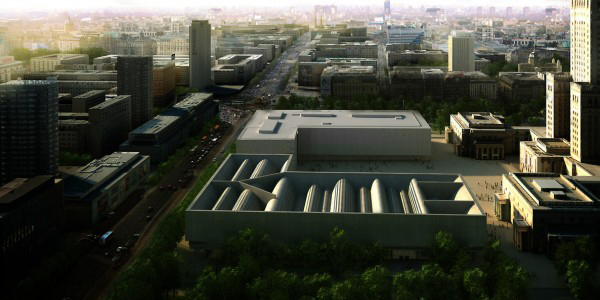The Architecture of New Museums in Central Europe - the quest for Icons in the 21st century

Image of the unrealised project for the Museum of Modern Art in Warsaw by Christian Kerez
Dr Katarzyna Jagodzińska
G08 Fellow
International Cultural Centre Krakow, Institute of European Studies Jagiellonian University
Monday, 8 December 2014
Macmahon Ball Theatre, Old Arts (Building 149)
The University of Melbourne
Modern, unconventional buildings are supposed to help Central European countries make their mark in Europe as a whole. Especially in Poland, each major city has tried to make a name for itself and to have a building whose form would possess the attributes of an urban icon. Municipal authorities, officials, and investors tend to overuse the catch-all term "icon", while referring to the success of Bilbao in a rather superficial manner. An architectural competition for the design of the Museum of Modern Art in Warsaw incited a discussion on the iconic aspect of architecture and the appetite for a sculptural building. In accordance with its requirements, it was supposed to become a new symbol of the capital city.
A need for a "Polish Bilbao" spread to other cities, too, namely, Toruń (Centre of Contemporary Art "Znaki Czasu"), Radom (Masovian Centre of Contemporary Art "Elektrownia"), Katowice (Silesian Museum), Wrocław (Wrocław Contemporary Museum), to some extent to Krakow (Museum of Contemporary Art in Krakow MOCAK), and Łódź (Special Art Zone). The iconic quality of museum edifices can be observed in other Central European countries, especially Poland.
In Hungary the need for icons has become strongly apparent only in the context of investments in the Budapest Museum Quarter - the subject of an architectural competition held in 2014. Danubiana Meulensteen Art Museum in Čunovo, Slovakia, and a preliminary architectural proposal for the Central European Forum Olomouc in the Czech Republic possess a symbolic quality. This lecture will focus on one of the hottest issues surrounding museums in Poland and Hungary - a great need for new spectacular museum buildings. Many of them have already been opened, however not all are spectacular.
Dr Katarzyna Jagodzińska's academic research explores museum studies, especially in the region of Central Europe. She has a PhD in Art History (2012) and is a graduate of Art History (M.A.) and Journalism and Communication (BA, MA), Jagiellonian University, Krakow. She is an author of over 60 articles in the field of museums and art history in academic and specialist magazines and volumes (author of four chapters in a first academic textbook devoted to the issue of culture and development in Poland released in 2014 - Kultura i rozwój), member of the editorial team of the HERITO quarterly and local editor of the RIHA Journal - international academic journal of art history, member of ICOM, AICA and Association of Art Historians in Poland. She works as an Art critic and curator.